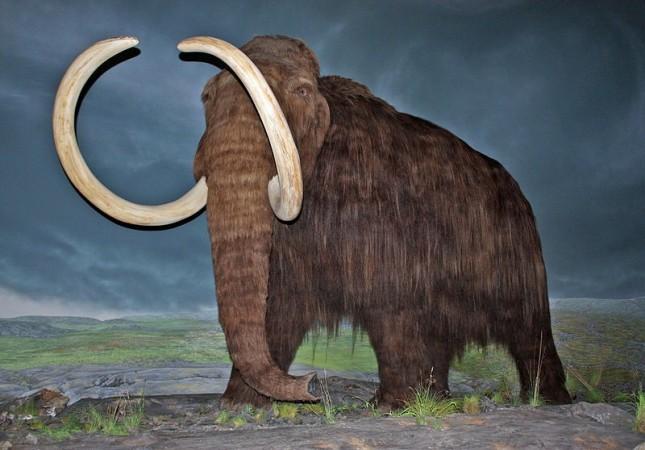
Woolly Mammoths, large elephant-like animals roamed the earth for several millennia before they went extinct about 4,000 years ago. Geneticists now want to bring back the creature to preserve the environment and keep the ecosystem in the northern tundra alive.
Mammoths, scientifically known Mammuthus primigenius, used to roam the northern tundra in a region known as the Mammoth Steppe, reports the Inquisitr. The ecosystem in that region was thriving because of these beasts, says MIT geneticist George Church. mammoths played an important role in the way the environment behaved, notes the report.
Mammoths, says Church, "knocked down trees and allowed the cold air to hit the ground and keep the cold in the winter, and they helped the grass grow and reflect the sunlight in the summer." This made way for the soil to cool, leading to a flourishing flora and fauna. A wide variety grasses began to grow and thrive only because of the actions of the mammoths.
After the animals went extinct, the Steppes grass died out as well, giving rise to tall trees that shielded the surface from the harsh winters, creating a blanket over the forest floors. Also, these massive beasts used to trample the ice and expose the surface to the cold, this does not happen anymore and the forest floor stays warm.
While the role of mammoths might seem insignificant, scientists say that in the current climate of global warming and the general heating up of the planet, it does, in fact, play a significant role. "That fact, coupled with significantly warmer summers, accelerates the melting of the permafrost and the release of greenhouse gases that have been trapped for millennia," says Revive & Restore a non-profit organization, currently working with Church. The project is called "Harvard Woolly Mammoth Revival".
Arctic permafrost has a lot of carbon dioxide, methane and elemental mercury. Reports that emerged last year had suggested that melting ice and warming oceans in the arctic would release about three times as much carbon as all the forests of Earth combined. Mercury is another issue because currently there is 56 million litres of mercury in the northern permafrost. That is about 10 times more than all of the human-caused mercury emissions over the last three decades.
This is why scientists want to bring back a hairy army of hybrid mammoth- elephants. It already seems like a Jurassic Park-level bad idea, but Church believes that the plan would work as these creatures can bring back the Steppes.
"The introduction of grazers to tundra generates a nutrient cycle that allows grasses to out-compete the tundra flora, converting the ecosystem in a manner that then favours the persistence of grazers and grasses," points out the Revive & Restore organization.
Today's elephants are not equipped to handle the cold, so Church wants to use gene editing tools like Clustered Regularly Interspaced Short Palindromic Repeats (CRISPR) to combine Asian elephants with Mammoths and create a new breed of pachyderms – one that can survive the cold, trample the grass, and uproot trees like its ancestors.
Genetic code needed for the Harvard Woolly Mammoth Revival project will come from a mammoth female called "Lyuba" found in 2007, notes the report. It was discovered perfectly preserved intact in the Siberian permafrost. The animal had died 41,000 years ago. Once bred successfully in a lab, the team hopes to release them in the Pleistocene Park in northern Siberia.












